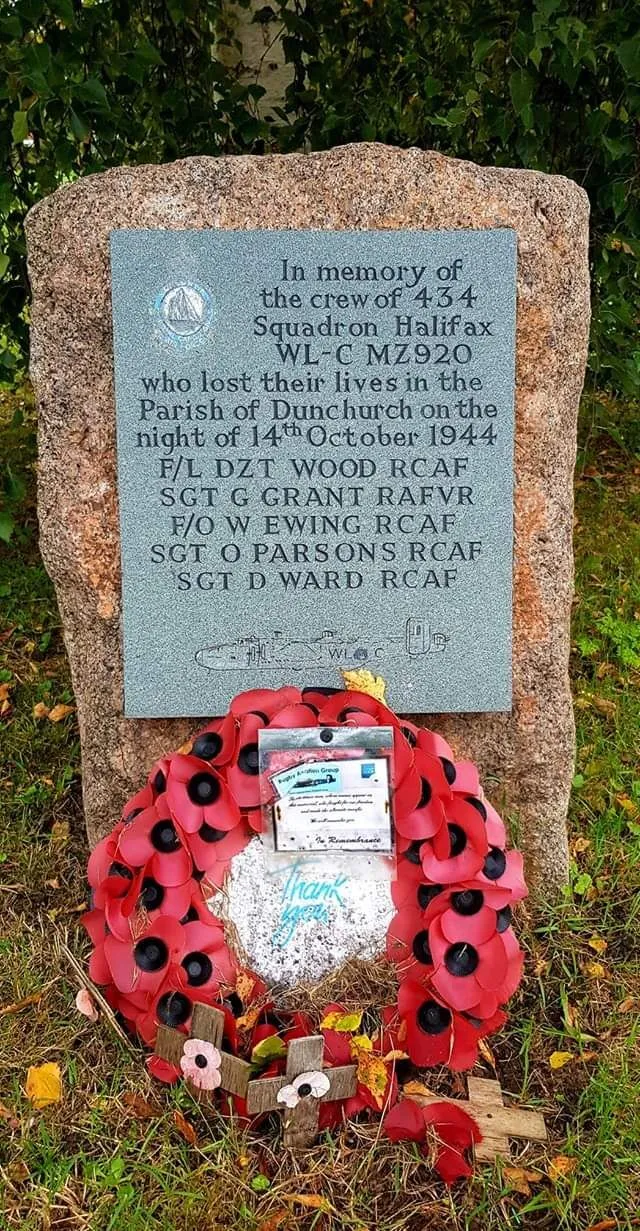OPERATION HURRICANE
Operation Hurricane was a 24-hour bombing operation to "demonstrate to the enemy in Germany generally the overwhelming superiority of the Allied Air Forces in this theatre" (in the directive to Harris ACO RAF Bomber Command)[4] and "cause mass panic and disorginazation [sic] in the Ruhr, disrupt frontline communications and demonstrate the futility of resistance" (in the words of the Official RAF History).
During the day of 14 October 1944, 957 RAF Bomber Command aircraft dropped 3,574 long tons (3,631 t) of high explosive and 820 long tons (830 t) of incendiaries on Duisburg. Also during the day, USAAF VIII Bomber Command Mission 677 made PFF attacks on Cologne marshaling yards at Gereon, Gremberg, and Eifelter; as well as Euskirchen.[2] A second RAF raid on Duisburg during the night of 14/15 October in two waves about two hours apart dropped a further 4,040 tonnes of high explosive and 500 tonnes of incendiaries. In some cases RAF crews flew both the daylight and night-time raids; a total of nearly eleven hours flying time in 24 hours. During the same night the RAF also bombed Brunswick (German: Braunschweig), destroying the town centre. Nearly fifty Mosquitos carried out nuisance raids and 132 aircraft from No. 100 Group targeted German night fighter operations.
In 24 hours, RAF Bomber Command had flown 2,589 sorties, losing 24 aircraft, dropping approximately 10,050 long tons (10,210 t) of bombs and killing over 2,500 civilians in Duisburg alone. Wikipedia
{{link,wiki,https://en.wikipedia.org/wiki/Operation_Hurricane_(1944), Operation Hurricane - Duisburg}}6 Bomber Group October 14/15, 1944
200 Halifaxes from 408, 415, 420, 424, 425, 426, 427, 429, 431, 432,433, and 434 squadrons were joined by 39 Lancasters from 419 and 428 squadrons.The crews were over the target at between 17,000 and 21,000 feet, releasing 1,968,000 lbs of high explosives and 187,000 lbs of incendiaries. This was the 2nd instalment for Duisberg in less than 24 hours. The crews were over this target in the early morning. 9,000 tons of ordinance had fallen on Duisberg in less than 48 hours according to reports there was severe damage through out the city. Richard Koval (6bombergroup.ca)

First mission of the day: Halifax V serial NR144 (not this aircraft) is on a daylight raid -- up at 06:30, down at 11:45, target Duisburg. (see 434 form 541 ORB). Same crew as later night operation crew.
Second mission of the day: flying at 20,000 feet over the border of Nottinghamshire and Leicestershire, the starboard outer engine catches fire and despite the pilot attempt to extinguish the fire it rages on (Crew log book report starboard inner, but investigation shows starboard outer. See 540 summary ORB). It is obvious that the pilot has to abort the mission and land somewhere for the crew to escape. The RAF airfields in the area are launching their bombers and do not want a burning aircraft to block their runways. Aircraft in this situation cannot simply return to base because there are other aircraft taking off for combat missions. The crew must find a base that that is not engaged in the raid. Halifax MZ920 diverted to RAF Church Lawford (used as a training base) south west of Rugby Warwickshire.
The Halifax is approaching the airfield at Church Lawford, but has to fly over Dunchurch first in order to reach safety. Two of the crew members, Flying Officer Stirling, the bomb aimer and Flight Sergeant Stamatis, the wireless bale out.
It was Stirling's job to open the hatch, but the air rush caused the hatch to jam. Stirling puts his whole weight on the partially open hatch but can't budge it. Stamatis then puts his weight on Stirling's shoulders and their combined weight breaks the hatch free. Stirling lands in farmer Webbs' field and is slightly injured as related by his daughter, Janne Stirling Cappa. Stamatis, however, is "injured seriously" (see 434 form 540 ORB). (There is a post card from a Dunchrch villager stating that one of the parachutists hit electrical wires upon landing. This report is isolated and unconfirmed by RCAF records or family and may not be a correct reference)
Flight Lieutenant Wood makes a final unsuccessful attempt to extinguish the fire by diving. The five remaining crew members lose their lives as the remains of the aircraft fall to earth at 23:50. The map shows where the aircraft came down alongside the A45 road to Coventry, which was closed because of the unexploded bombs. Is was reopened at 15:45 hrs on Friday 27th of October, almost two weeks after the crash.
The Canadian crew members were interred at Chester's Blacon cemetery. Sergeant Grant was buried at Mountain Ash, Rhondda Cynon Taf, Wales. some material from http://friendsofdunchurchsociety.org/friendsofdunchurch/archive-halifax-bomber.htm
 Bomber Command Museum Monthly ORB
Bomber Command Museum Monthly ORB
